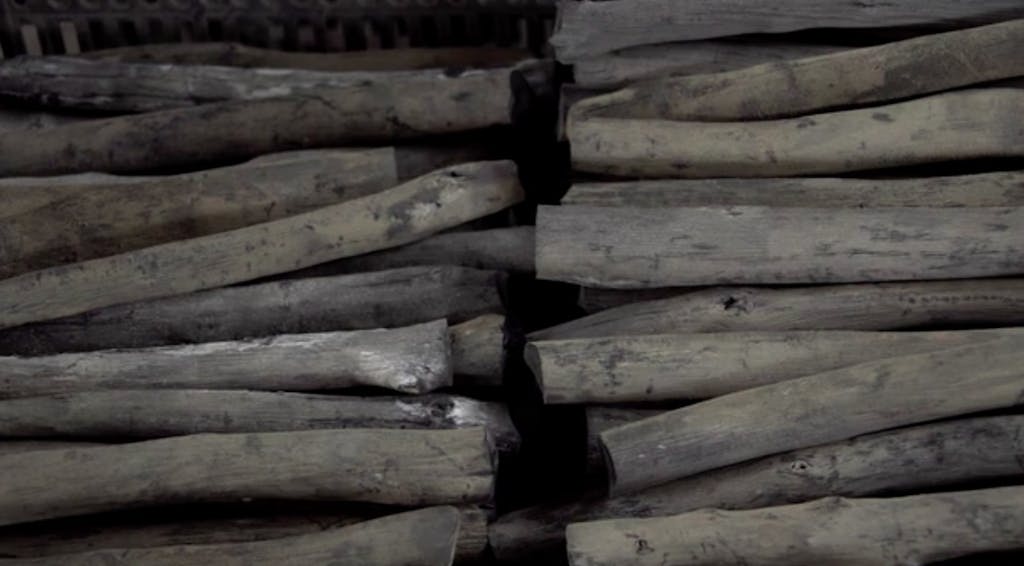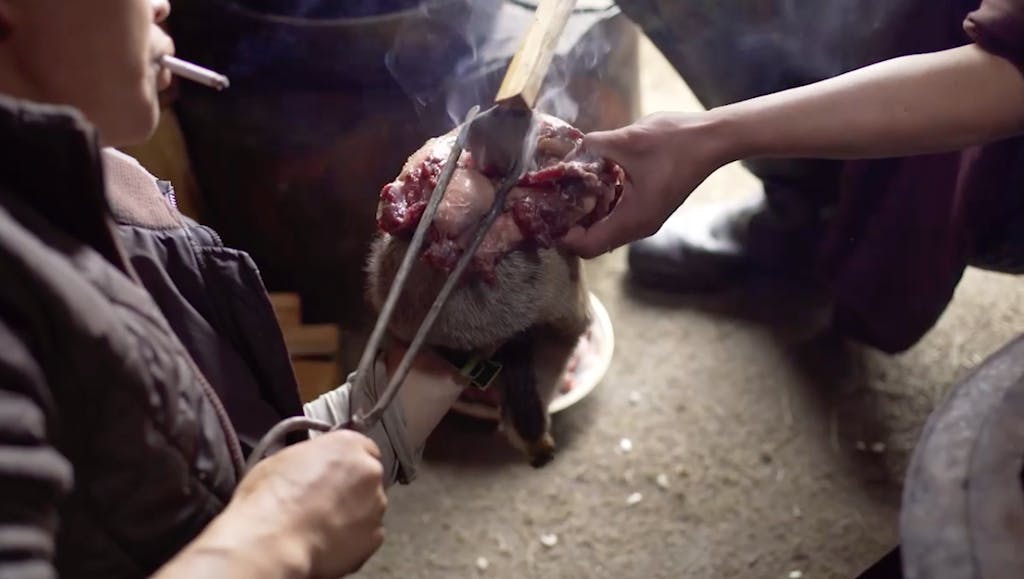A version of this article was first published in SXSWorld Magazine. The film debuted last week at SXSW.
The whole of America is in the midst of full-on barbecue worship. Of late that fascination has spread across the globe, and the new stuff looks a whole lot like Texas barbecue. All those brisket photos make it seem as if Paris or Tel Aviv or Singapore just got a new culinary toy, but don’t let it fool you into thinking that barbecue is just a recent global phenomenon. There is a vast array of long-practiced barbecue traditions from Armenia to New Zealand, but not everybody has an American-sized megaphone to tell their culture’s barbecue story. Thankfully, filmmakers Matthew Salleh and Rose Tucker traveled the equivalent of three times around the globe to capture the diverse barbecue cultures of twelve countries in their new film Barbecue.
A series of vignettes document everything from goat barbacoa in Mexico that’s cooked underground in a brick-lined pit all night long, to Japanese izakaya, a flurry of skewered meats over blazing hot charcoal, cooked with a rapidity that matches the bustle of Tokyo. The preceding scene in a rural Japanese forest juxtaposed the time-intensive process of making the binchotan charcoal (it roasts in a kiln for a month) that burns so brightly and swiftly on the izakaya grill. As the film jumps from country to country, each segment is narrated only by the cooks involved (most of the film is subtitled). There are no interviews of outside experts, or really much context at all, which allows each vignette to tell its own tale. Still, a strong theme develops of barbecue as a gathering that fosters community, and fire as fuel, but also as an elixir for storytelling.

“Rule #1 about this film is that it’s about barbecue, and rule #2 is that it’s not about barbecue,” Salleh said about his film direction. As he and Tucker traveled, they wanted to focus on the essence of barbecue besides the obvious sustenance. In Sweden, disposable aluminum grills called engangsgrill are purchased from grocery stores en masse at the first sight of spring. The food doesn’t get much more complicated than grilled sausages, but the barbecue is really an excuse for friends to gather in the newly green grass outside and say goodbye to the incredibly long nights of winter. As one local put it, “You have to fill up on sunlight, so you have the memory of it for the rest of the year.”
In the Za’atari refugee camp in Jordan, just across the border from Syria, it is barbecue that brings some joy to lives interrupted by a brutal war. One of the first businesses to open in the camp was Atef Muhammad Al Hariri’s shawarma restaurant. The meat had to be smuggled in early on. There were few resources, but Al Hariri found a shawarma chef, Ahmed Al Jabawy. They couldn’t live the normal life they’d imagined, but Allah willing, they’d have barbecue.
“Everyone in the world has the best barbecue,” Salleh told me with a laugh. A shack in South Africa no larger than a lawnmower shed had a sign posted that boasted “Number One Chicken Dust,” translated: the best barbecue in town. Sound familiar? It was that belief, and the willingness of barbecue cooks everywhere to share that opinion online, which provided most of the pair’s location leads. Salleh admitted, “We had no plans to go to Armenia,” but a barbecue video on Reddit turned into an invitation to stay with an Armenian family documenting khorovats. This scene in the film opens with a young man, hair dryer in hand, summoning fire from a pile of charcoal. One of the hosts, Armen Mheryan, without a hint of sarcasm explains that Armenians are superior pitmasters because, “The Armenian soul is fire and flames.”

The last minute side trip to Armenia was a joy to the filmmakers, but there were plenty of challenges elsewhere. They drove for hours through the plains of Mongolia to reach the home of their nomadic hosts. “We got there and it was just an empty field,” Salleh recalls the moment of fear and frustration. They found another family who told them to look twenty miles down the river. The hosts had simply moved. While women milked yaks, the men hunted the native marmots, about the size of a groundhog. Their preparation was one of the most unexpected in the film. Let’s just say the sound of hot rocks sizzling inside the carcass was only drowned out by the blowtorches removing the hair. They call the result boodog, and it’s like no other barbecue tradition I’ve witnessed. It was only during their research afterward where Salleh learned that, “the marmots of the that area are natural carriers of the bubonic plague.”

The boodog scene reminds us all how much variety there is in the barbecue world, but for Texans, there’s also some familiar turf that’s covered. The hallowed ground of Smitty’s in Lockhart and Louie Mueller Barbecue in Taylor are featured as well as a few joints outside of Central Texas that don’t get enough recognition given their longevity, namely Patillo’s in Beaumont and Prine’s in Wichita Falls which opened in 1912 and 1925 respectively. Thankfully , this wasn’t just a greatest hits tour of Texas barbecue. (Full disclosure, I helped point Salleh and Tucker to a few of my favorite Texas barbecue joints during their research phase.)
For a how-to film on barbecue, you’ll need to look elsewhere. That doesn’t mean it’s not educational. I make a living writing about barbecue, which involves plenty of research. I read and watch everything I can find about the subject which I love, but nothing in recent memory has taught me more about barbecue than this film. It has renewed a thirst in me for true barbecue exploration.
Although the film highlights the differences between the barbecue cultures around the world, is it after all, an examination of how similar we are, how we all use barbecue for the shared goal of fellowship no matter what is on the grill. Most importantly, Salleh reminds us that barbecue should be celebrated because the practice itself is a celebration. “When something good has happened, people put meat over a fire.”








